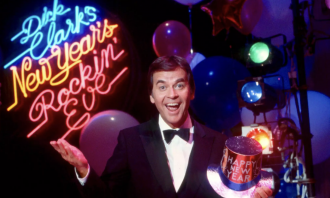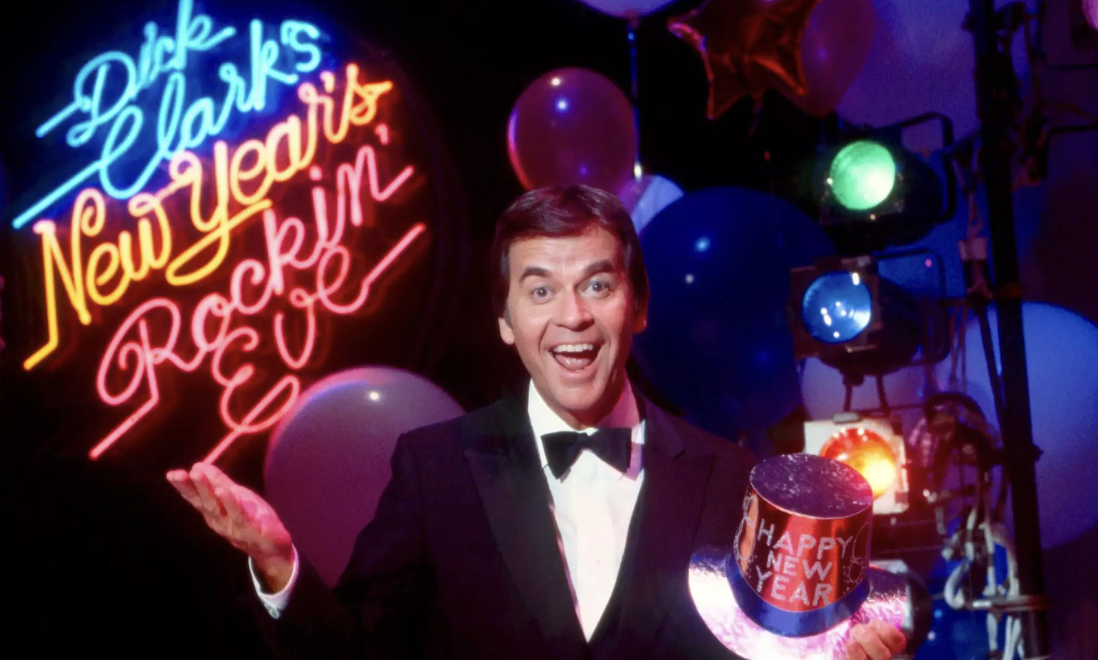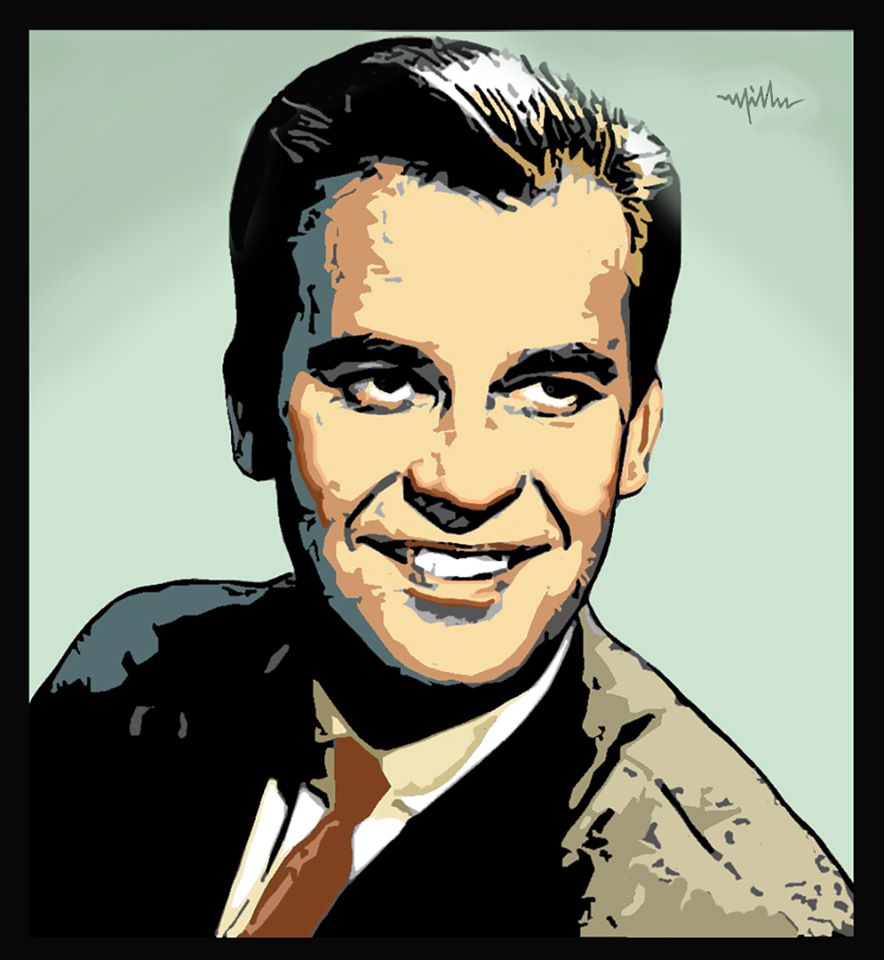TV Emperor of Rock ’n’ Roll and New Year’s Eve Dies at 82
By Bruce Weber
April 18, 2012
Dick Clark, the perpetually youthful-looking television host whose long-running daytime song-and-dance fest, “American Bandstand,” did as much as anyone or anything to advance the influence of teenagers and rock ’n’ roll on American culture, died on Wednesday in Santa Monica, Calif. He was 82.
A spokesman, Paul Shefrin, said Mr. Clark had a heart attack at Saint John’s Health Center on Wednesday morning after entering the hospital the night before for an outpatient procedure.
Mr. Clark had a stroke in December 2004, shortly before he was to appear on the annual televised New Year’s Eve party he had produced every year since 1972, and hosted for most of that time. He returned a year later, and although he spoke haltingly, he continued to make brief appearances on the show, including the one this past New Year’s Eve.
With the boyish good looks of a bound-for-success junior executive and a ubiquitous on-camera presence, Mr. Clark was among the most recognizable faces in the world, even if what he was most famous for — spinning records and jabbering with teenagers — was on the insubstantial side. In addition to “American Bandstand” and “New Year’s Rockin’ Eve,” he hosted innumerable awards shows, comedy specials, series based on TV outtakes and the game show “$10,000 Pyramid” (which lasted long enough to see the stakes ratcheted up to $100,000). He also made guest appearances on dramatic and comedy series, usually playing himself.
But he was as much a businessman as a television personality. “I get enormous pleasure and excitement sitting in on conferences with accountants, tax experts and lawyers,” he said in an interview with The New York Times in 1961. He was especially deft at packaging entertainment products for television.
Starting in the 1960s, Mr. Clark built an entertainment empire on the shoulders of “Bandstand,” producing other music shows like “Where the Action Is” and “It’s Happening.” He eventually expanded into game shows, awards shows, comedy specials and series, talk shows, children’s programming, reality programming, and movies. His umbrella company, Dick Clark Productions, has produced thousands of hours of television; it also has a licensing arm and has owned or operated restaurants and theaters like the Dick Clark American Bandstand Theater in Branson, Mo.
But none of it would have been possible without “American Bandstand,” a show that earned immediate popularity, had remarkable longevity and became a cultural touchstone for the baby-boomer generation. It helped give rise to the Top 40 radio format and helped make rock ’n’ roll a palatable product for visual media — not just television but also the movies. It was influential enough that ABC broadcast a 40th-anniversary special in 1992, three years after the show went off the air, and a 50th-anniversary special 10 years later. Mr. Clark, who had long since been popularly known as “the world’s oldest teenager,” was the host of both, of course.
Philadelphia Roots
“American Bandstand” was broadcast nationally, originally from Philadelphia, from 1957 to 1989, and the list of well-known performers who were seen on it, many of them lip-syncing their recently recorded hits, spanned generations: from Ritchie Valens to Luther Vandross; from the Monkees to Madonna; from Little Anthony and the Imperials to Los Lobos; from Dusty Springfield to Buffalo Springfield to Rick Springfield. Mr. Clark was around for it all.
“It meant everything to do Dick’s show,” Paul Anka said in telephone interview on Wednesday. “This was a time when there was no youth culture — he created it. And the impact of the show on people was enormous. You knew that once you went down to Philadelphia to see Dick and you went on the show, your song went from nowhere to the Top 10.”
“American Bandstand’s” influence waned somewhat after it changed from a weekday to a weekly format, appearing on Saturday afternoons, in 1963 and moved its base of operations to Los Angeles the next year. And as the psychedelic era took hold in the late 1960s and rock ’n’ roll fragmented into sub-genres, the show could no longer command a central role on the pop music scene.
Indeed, the show was criticized for sanitizing rock ’n’ roll, taking the edge off a sexualized and rebellious music. But it was also, in important ways, on the leading edge of the culture. Mr. Clark and his producer, Tony Mammarella, began integrating the dance floor on “American Bandstand” early on; much of the music, after all, was being made by black performers.
“I can remember, a vivid recollection, the first time ever in my life I talked to a black teenager on national television; it was in what we called the rate-a-record portion of ‘Bandstand,’ ” Mr. Clark recalled. “It was the first time in a hundred years I got sweaty palms.”
He was fearful, he said, of a backlash from Southern television affiliates, but that didn’t happen. From that day on, he said, more blacks began appearing on the show. And as time went on, the show’s willingness to bridge a racial divide that went almost entirely unacknowledged by network programming was starkly apparent, “providing American television broadcasting with the most visible ongoing image of ethnic diversity until the 1970s,” according to an essay about the program on the Web site of the Chicago-based Museum of Broadcast Communications.
“We didn’t do it because we were do-gooders, or liberals,” Mr. Clark said. “It was just a thing we thought we ought to do. It was naïve.”
The right man at the right time, Mr. Clark was a radio personality in Philadelphia in 1956 when he stepped into the role of host of what was then a local television show called “Bandstand” after the regular host was fired. By the following October, the show was being broadcast on ABC nationwide with a new name, “American Bandstand,” and for the next several years it was seen every weekday afternoon by as many as 20 million viewers, most of them not yet out of high school, eager to watch a few dozen of their peers dance chastely to the latest recordings of pop hits, showing off new steps like the twist, the pony and the Watusi, and rating the new records in brief interviews.
“It’s got a good beat and you can dance to it” became a national catchphrase.
Handsome and glib, Dick Clark was their music-savvy older brother, and from that position of authority he presided over a grass-roots revolution in American culture in the late 1950s and early ’60s. “American Bandstand” was the first show to make use of the new technology, television, to spread the gospel of rock ’n’ roll. In its early years it introduced a national audience to teen idols like Fabian and Connie Francis, first-generation rockers like Bill Haley and Jerry Lee Lewis, and singing groups like the Everly Brothers. Even more, it helped persuade broadcasters and advertisers of the power of teenagers to steer popular taste.
“At that moment in time, the world realized that kids might rule the world,” Mr. Clark said. “They had their own music, their own fashion, their own money.”
By early 1958, “American Bandstand” was so big a hit that network executives installed a new show in a concert format in its Saturday night lineup, calling it “The Dick Clark Show.” In June, ABC sent it on the road to broadcast from a number of cities. In October, when “The Dick Clark Show” originated from Atlanta, both black and white teenagers were in the audience — amounting to one of the first racially integrated rock concerts — and with National Guard troops present, it weathered threats from the Ku Klux Klan. The nighttime show lasted only until 1960.
“I was 26 years old, looked the part, knew the music, was very comfortable on television,” Mr. Clark recalled. “ ‘They said, ‘Do you want it?’ And I said, ‘Oh, man, do I want it!’ ”
Mr. Clark’s first two marriages ended in divorce. He is survived by his wife, Kari Wigton; three children, Richard, Duane and Cindy; and three grandchildren.
He won five Emmy Awards, including a Daytime Emmy lifetime achievement award in 1994, and in 1993 was inducted into the Television Hall of Fame and the Rock and Roll Hall of Fame. He owed his success, he said, to knowing the mind of the broad audience.
“My greatest asset in life,” he said, “was I never lost touch with hot dogs, hamburgers, going to the fair and hanging out at the mall.”
ADVERTISEMENT
BY
Looking for more information?



 Lizzie Kunde
Lizzie Kunde 
 Amanda S. Stevenson
Amanda S. Stevenson 
